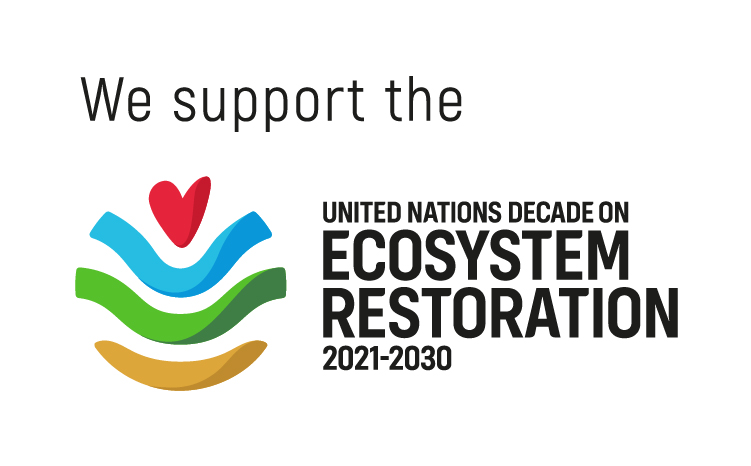Trees for Leopards®
Haridwar, India
Available for Adoption upto: 13,141 Trees
Project Purpose
Trees for Forests™ & WildlifePlant Now Location

The plantation project is implemented in Haridwar. The campus is located at the boundary of Rajaji National Park.

Enhancement of
Biodiversity

Carbon Sequestration

Increase in
Green Cover

Reduction of
Man-Animal Conflict

Reduction in
Air Pollution

Generation of
Rural Employment







About the Project
As a nation, India is experiencing rapid development that holds the promise for a brighter future. The advancements in technology, industry, and various sectors are undeniably impressive, driving economic growth and improving the standard of living for many. However, this progress comes with its own set of challenges, notably in terms of infrastructural expansion. The extensive infrastructural development, while crucial for modernisation, has led to a concerning rise in deforestation rates. This ecological imbalance has triggered a cascade of issues, such as deteriorating air quality and fragmentation of habitats.
As highlighted by Sandeep Sharma, a visiting scholar at the Smithsonian Conservation Biology Institute studying leopards and tigers, “These habitats and corridors in India are threatened by infrastructural developments and need to be conserved if we want to save these species for future generations.”[1]
The significance of forest cover for ambush predators like leopards cannot be overstated. A study featured in the journal Ecological Indicators emphasised the crucial link between forest cover and leopard presence. The study also highlighted that, “reduction in forest cover could reduce wild prey populations, or increase chances of them foraying into farmlands to forage on cultivated crops.”[2]
Along with leopards, elephants have also been spotted in the region. Recognised as keystone species, these gentle giants have a profound impact on the well-being of the ecosystem. With their ability to extract water with their tusks, they benefit not only themselves but also other animals during droughts.
The primary mission of this tree plantation project, ‘Trees for Leopards®’ is to expand the green cover of the area, creating a space for the leopards, elephants, and other wildlife to thrive, thereby reducing instances of encounters with humans.
This online tree plantation project aims to contribute to the restoration and preservation of an ecosystem that was similarly disrupted. Its purpose extends towards enhancing local biodiversity, particularly birds and mammals.
Tree Species
The tree species chosen for this project are based on three factors: their ecological significance, community benefits and aesthetic appeal.
Indian mahogany/Toon (Toona ciliate) and Indian elm/Papri (Holoptelea integrifolia) can be utilised by the community for their valuable resources, mainly timber. Whereas, Flame tree/Gulmohar (Delonix regia) and Chinaberry/Bakayan (Melia azedarach) are primarily grown for their visual appeal.
Sacred fig/Pipal (Ficus religiosa) and Indian Banyan/Bargad (Ficus benghalensis) are also grown in this region. Together, planting trees of these species will play a part in maintaining the delicate balance of our ecosystem.
Planting trees is essential for carbon sequestration as they store surplus carbon in their roots, stems, and leaves, effectively cooling the environment and mitigating atmospheric stressors. Additionally, they contribute to enhanced air quality by absorbing gaseous pollutants, thereby reducing the risk of long-term respiratory diseases.
Social Impact
Our project’s impact is not limited to safeguarding the wildlife habitat. We are also committed to working alongside the local communities. In addition to creating a source of income for them, the locals also benefit from the plantation produce, mainly timber. Through our plantation activities, we foster community interaction and engagement, which is directly linked to improving the physical, mental and social well-being of individuals.[3]
An essential facet of the project involves planting trees, which not only holds ecological significance but also reaps health benefits. The green cover will have a positive impact on the region’s air quality and overall carbon balance. Both the community and wildlife will reap the benefits of improved air quality and carbon sequestration.
The tree plantation project will also help to improve the aesthetic value of the area, which could eventually be used as recreational spaces for communities.
[1] Smithsonian’s National Zoo & Conservation Biology Institute & Smithsonian’s National Zoo and Conservation Biology Institute. (2016, June 21). New Genetics Research On Leopards And Tigers In India Underscores Importance Of Protecting Forest Corridors. Smithsonian’s National Zoo.
[2] Puri, Mahi, et al. "The balancing act: maintaining leopard-wild prey equilibrium could offer economic benefits to people in a shared forest landscape of central India." Ecological Indicators 110 (2020): 105931.
[3] Turner‐Skoff, J. B., & Cavender, N. (2019). The benefits of trees for liveable and sustainable communities. Plants, People, Planet, 1(4), 323-335.









